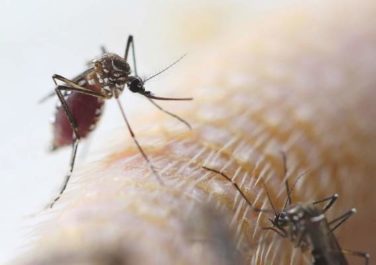REPORTING FROM ID WEEK 2017
SAN DIEGO (FRONTLINE MEDICAL NEWS) – Rates of reported Legionnaires’ disease nearly quadrupled in the United States between 2000 and 2015, and it is likely underdiagnosed.
“Improved testing and surveillance are needed to improve understanding of disease and outbreak burden,” Laura A. Cooley, MD, said at an annual scientific meeting on infectious diseases. “There is more to learn about environmental sources of Legionella for cases not associated with known outbreaks and about the distribution of Legionella in the environment.”
Dr. Cooley, a medical epidemiologist at the National Center for Immunization and Respiratory Diseases at the Centers for Disease Control and Prevention, Atlanta, said that between 2000 and 2015, the rate of reported cases in the United States increased by about 350%, from 0.42 cases per 100,000 people to 1.89 cases per 100,000, “and this is likely an underestimate due to underdiagnosis.” Reasons for the increase are likely multifactorial, she said, including increased susceptibility of the population. “The population is aging, and there are more people in the United States on immunosuppressive medications. There also may be more Legionella in the environment. There are lots of reasons for that, possibly including warmer temperatures, an aging infrastructure, or water-saving building modifications.” There also are improved diagnostic capabilities, with the urinary antigen test, and improved diagnosis and reporting due to increased awareness and testing, and increased surveillance capacity.
A Gram-negative bacillus, Legionella is an intracellular parasite of free-living protozoa primarily found in freshwater. “It can live and grow in biofilm, and there are more than 60 species of the bacterium,” she said at the combined annual meetings of the Infectious Diseases Society of America, the Society for Healthcare Epidemiology of America, the HIV Medicine Association, and the Pediatric Infectious Diseases Society.
Cases are higher in the warmer months, and the rates are highest among the elderly, men, and those of black race. Currently, L. pneumophila accounts for about 90% of cases in the United States. “Once it’s transmitted, it has to hit a susceptible population to cause disease, generally older individuals and people with underlying conditions,” Dr. Cooley said.
According to a CDC analysis of 27 building-associated Legionella outbreaks in the United States between 2000 and 2014, common settings included hotels, long-term care facilities, and hospitals. Common sources of transmission were aerosolizing devices such as showers and faucets, cooling towers, hot tubs, and decorative fountains ( MMWR 2016;65[22]:576-84) . The median number of cases per outbreaks ranged from 3 to 82. Cooling tower outbreaks affected a median of 22 people, while potable water outbreaks affected a median of 10 people.
A separate analysis evaluated Legionella cases reported among U.S. residents between 2005 and 2009 ( MMWR. 2011;60[32]:1083-6 ). It found that only 4% were associated with outbreaks, and 96% were sporadic. “That doesn’t mean that [the cases] weren’t associated with the same kind of source, they just weren’t identified as an outbreak,” Dr. Cooley said. “It shows that there is a lot to learn about transmission of Legionella.”
Data from the National Notifiable Diseases Surveillance System indicate that rates of Legionella continue to rise nationwide, especially in the Midwest and Northeast. “Why? It’s possible that there are differences in testing preferences and reporting preferences in this region of the country,” Dr. Cooley noted. “Maybe people are more tuned in to the potential for outbreaks, but there are reasons why there could be differences in disease, like differences in infrastructure, climate, population density, and cooling tower density.” CDC data from 2015 indicate that most cases are not associated with a known exposure, and that the case fatality rate differs by exposure type: 12% for cases reporting health care exposure during the 10 days before symptom onset (25% for definite cases), 9% for cases reporting assisted or senior living exposure, 7% when no specific exposure is reported, and 4% for cases reporting travel exposure ( MMWR. 2017;66[22]:584-9 ).
The U.S. case definition of Legionnaires’ disease consists of clinical or radiologic pneumonia plus confirmatory laboratory testing, either by urinary antigen test (UAT), lower respiratory culture, or appropriate serological testing. Polymerase chain reaction can be used as a presumptive test for a suspect case. “UAT is easy and it detects L. pneumophila serogroup 1 (Lp1), but it has some gaps,” Dr. Cooley said. “It isn’t completely sensitive for Lp1, and it doesn’t detect any other species or serogroups. That’s why we also recommend that a culture of respiratory secretions on selective media be performed at the same time. That being said, in the U.S., nearly all reported cases of Legionella are diagnosed by UAT only.”
A 2016 CDC MMWR and Vital Signs report found that almost all Legionella outbreaks could be prevented with effective water management, and the CDC has published a step-by-step guide to creating a water management program to reduce Legionella growth and spread in buildings. The 2017 MMWR Report found that definite health care–associated Legionnaires’ disease is deadly for one in four people who get it. The report also found that this issue is widespread; 76% of complete reporting jurisdictions reported at least one definite case of health care–associated Legionella disease in 2015. More recently, the Centers for Medicare & Medicaid Services issued a requirement to reduce risk in health care facility water systems to prevent cases and outbreaks. It applies to hospitals, skilled nursing facilities, and critical access hospitals.
Dr. Cooley reported having no financial disclosures.





